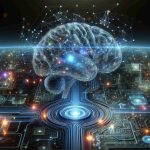OpenAI’s GPT-3 has been a game-changer in the world of artificial intelligence, showcasing a plethora of capabilities that continue to amaze users across various fields. Released in 2020, GPT-3 is one of the most advanced language models in existence, capable of generating human-like text based on the prompts it receives. With over 175 billion parameters, it can perform tasks with remarkable sophistication.
One of the most compelling examples of GPT-3’s versatility is its ability to engage in natural-sounding conversations. Developers have harnessed this strength to create chatbots that can mimic human-like interactions, offering support or companionship in applications ranging from customer service to mental health platforms.
Another domain where GPT-3 excels is content creation. Writers and marketers leverage GPT-3’s capacity to craft coherent articles, stories, and advertising copy in a fraction of the time it would take a human. It can even generate poems or mimic the style of specific authors, opening up creative possibilities.
For programmers, GPT-3 is a valuable tool as well. It can assist in generating code snippets and troubleshooting by understanding and responding to natural language input. As a result, it serves as a virtual assistant for developers, simplifying complex coding tasks with language-driven intuitiveness.
In education, GPT-3’s language comprehension abilities enable it to tutor students in subjects ranging from math to language arts, providing explanations, examples, and even tailored problem sets. This adaptability makes GPT-3 an invaluable resource in creating personalized learning experiences.
These examples only scratch the surface of GPT-3’s capabilities, yet they underscore its potential to transform a wide array of industries. As developers and companies continue to explore ways to integrate GPT-3 into their operations, the future looks bright for this innovative AI model.
How GPT-3’s Unseen Potential Could Reshape Our Lives
OpenAI’s GPT-3 has revolutionized artificial intelligence, but its impact extends even beyond its well-publicized feats. As this language model continues to evolve, it’s finding roles in unexpected areas, potentially reshaping our day-to-day experiences.
One lesser-known application of GPT-3 is in disaster management and response. By analyzing large volumes of communication data during emergencies, GPT-3 can help filter critical information, enabling quicker response times and efficient resource allocation in crisis situations.
In the realm of art and design, GPT-3 is being used to generate creative concepts that human artists might not conceive independently. By inputting certain parameters, designers can receive fresh and innovative design suggestions, pushing the boundaries of creativity.
A controversial aspect of GPT-3’s use is its role in fake news generation. While GPT-3’s capacity to produce realistic, human-like text is impressive, it raises concerns about its potential misuse in spreading misinformation. How do we balance AI advancement with ethical considerations?
Could GPT-3 change the legal landscape? Some experts believe AI could assist in legal research by scanning vast databases and providing insights into case precedents faster than human capabilities. But how might this affect the role of lawyers in the future?
As researchers and developers delve deeper into these unexplored domains, the ethical implications become ever more pressing. The quest for AI-driven progress must be cautious, ensuring that benefits are weighed against potential risks to societies worldwide.
For more information on GPT-3 and its developments, visit OpenAI.






